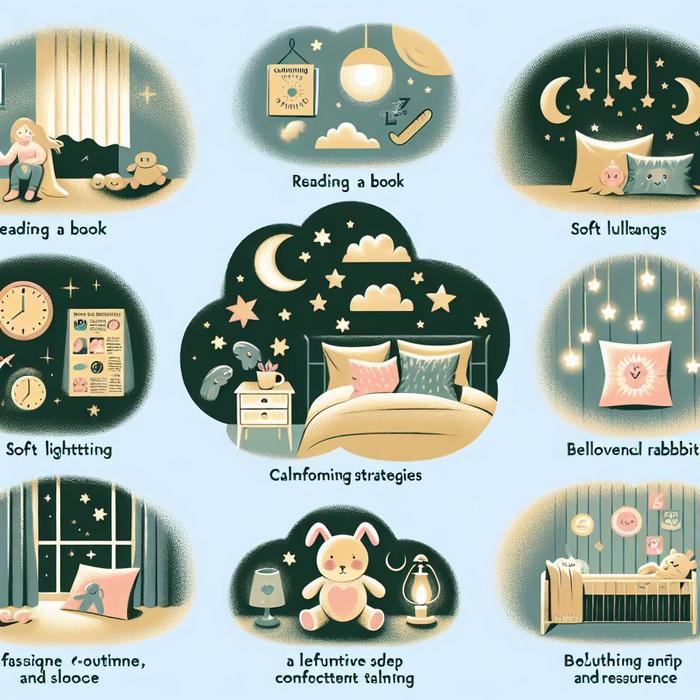Understanding and Managing Night Terrors in Toddlers
Indeed, nothing can paralyze you like the sound of your child screaming in the middle of the night. For parents who have experienced their child’s night terrors, it’s a profoundly distressing experience. However, this is a common phase that many toddlers go through. This blog post aims to provide insights on managing night terrors and establish calming strategies to ensure your child gets a good night’s sleep.
What are Night Terrors?
Before we delve into the methodologies for managing night terrors, it’s essential to understand what they are. Night terrors, according to KidsHealth, are episodes of screaming, intense fear, and flailing while still asleep. They’re often confused with nightmares, but the two are distinct. The disconcerting part for parents is that during a night terror, the child is hard to wake or comfort, even though they might appear to be awake.
Identifying the Signs of Night Terrors
Identifying the signs of night terrors is the first step towards managing the situation. According to the Mayo Clinic, these signs may include:
– Suddenly sitting up in bed
– Screaming or shouting
– Heavy breathing and sweating
– Having a racing pulse
– Appearing confused or disoriented
– Not recognizing you or responding to comfort
It’s also key to remember that most children don’t remember having a night terror the next morning, which can further add to parents’ distress.
Calming Strategies: Creating a Comforting Environment
Establish a Relaxing Pre-Sleep Routine
One way of managing night terrors is establishing a calming pre-sleep routine. This includes activities such as:
– Reading a story
– Listening to soothing music
– Doing relaxation exercises
According to Kelly Murray Sleep, these calming activities can help to create a tranquil transition from daytime to bedtime, helping your child unwind and prepare for sleep.
Maintain a Consistent Sleep Schedule
Another technique lies in maintaining a consistent sleep schedule. This doesn’t merely apply to what time you put your child to bed, but also waking times. As we shared in our post about how to make family meal times special, consistency is key in many aspects of parenting.
Managing Night Terrors: Supportive Responses
When your child is in the throes of a night terror, their state of fear can be disconcerting. However, Kids First Pediatrics suggests that your first response should be to stay calm. The child is not aware of their surroundings and attempts to wake them might just lead to more confusion.
Importantly, ensure their safety. As we noted in our post about extended breastfeeding, child safety is always a priority.
Finally, do not force them to go back to sleep immediately. Allow them to settle back into sleep at their own pace.
Care for Yourself
Although it’s essential to focus on your child’s needs, don’t forget that you also need to take care of yourself. Experiencing your child’s night terrors can be emotionally draining, so it’s important to ensure you’re maintaining your own well-being as well.
As we explore further into this topic, remember that night terrors are a phase that will pass. And while it’s difficult to see your child distressed, understanding night terrors and employing these techniques can help manage the situation, ensuring both you and your child are more comfortable and can enjoy a good night’s sleep.
Underlying Factors: What Causes Night Terrors?
Various factors can cause night terrors. According to What To Expect, primary triggers for night terrors can include:
– Stress or anxiety
– Overly tiring activities or ore bedtime stimulation
– Illness or fever
– Certain medications
– A sleep schedule that is inconsistent, or has recently been disrupted
Medical Intervention for Night Terrors
While most night terrors don’t require treatment, severe or prolonged cases might necessitate medical intervention. According to WebMD, physicians might counsel your child if they’re experiencing extreme anxiety or prescribe medication for short-term use. However, it’s crucial that medical intervention be a decision influenced by professional medical advice.
Long-Term Impact of Night Terrors
Although night terrors may seem intense, they usually don’t have any long-term effects on a child’s mental health. As the Cleveland Clinic points out, most children will outgrow night terrors without any need for intervention.
However, it’s worth noting that while the terrors themselves might not impact a child long term, the lack of sleep they can cause could potentially have negative effects if not addressed promptly. Therefore, it’s essential to apply calming strategies and ensure your child is getting sufficient sleep.
Aligning Expectations: Remember It’s a Phase
Children typically outgrow night terrors as they get older. HealthyChildren.org notes that as distressing as these episodes may be, they’re seldom an indication of any deeper psychological issue. It’s essential for you to remember these incidents aren’t a reflection of your parenting.
By understanding that night terrors are usually a temporary phase, it’s easier to harness patience in dealing with this challenge. Recognizing the situation for what it is will let you focus on helping your child and looking after your own emotional well-being.
Watch For Patterns
Children often have night terrors at a specific time each night, usually in the first few hours of sleep. Noting down when these occur will help you anticipate potential terrors and prepare your response appropriately.
In Conclusion
Watching your child experience a night terror can be genuinely distressing, but with the right understanding and tactics, you can help navigate this phase effectively. Remember to care for yourself too. Night terrors can be as stressful for parents as they are for children. By ensuring both parent and child are taken care of, you’re creating a supportive environment where both can thrive – even during the midnight hours.







